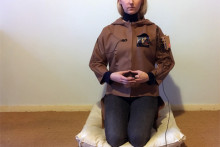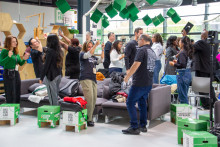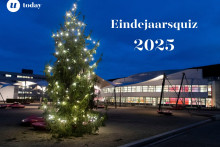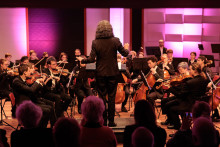The meditation suit, which was developed by neoteric artist Danielle Roberts together with the DesignLab, merges the spiritual with the technical by using the Internet of Things and Artificial Intelligence to recognize and simulate your optimized meditation environment.
Fitted with nine sensors on the arm and chest, the meditation suit could be described as a robe with rustic tunic look and a modern techy feel. It records biometric and environmental conditions to monitor and analyse how well the wearer meditated in different light conditions. Once it gets to know the user, it uses this information to create their tailor-made light environment for a personalized meditation experience.
The idea came to Roberts, a Dutch artist working in the intersection of art, design, and technology, during one of her own meditation practices. ‘We are sensitive to light conditions in any other situation: we prefer romantic candlelight over brash office lighting for a dinner date – so why shouldn’t light have an effect on meditation as well?’ asked Roberts.
Experiment in DesignLab
Students at the DesignLab worked to bring the suit from the prototype to its current iteration, which was tested in an experiment to determine whether light has an influence on meditation sessions. While the results show that, statistically, light has an insignificant effect on the quality of meditation, participants of the experiment claim their experience in the suit was positive.
‘I didn’t feel the suit at all while I had it on, so it didn’t pose as an obstacle to my meditation. Nevertheless, because I knew I was getting physiological feedback I became more aware of my practice, which enriched my meditation,’ says Alexandra Batea, a participant in the experiment.
Intrusive technology?
Members of the audience voiced doubts at technology’s ability to enhance spirituality, particularly the intrusive quality of monitoring every breath and every heartbeat. The feedback however, argued Roberts, is not immediate in the form of buzzers or alarms, but can only be viewed after the meditation practice. Hence the wearer feels no pressure to perform perfectly, and has only to focus on the moment as one should during meditation.
‘Technology has always been used in some shape or form to improve meditation for as long as the practice has existed, for instance chanting mantras or burning incense. Even the way you hold your hands is a form of feedback: the tension you feel in your hands is indicative of how relaxed you are. Feedback monitoring has been around in more traditional ways, I’m just using the latest technology to explore it deeper.’








